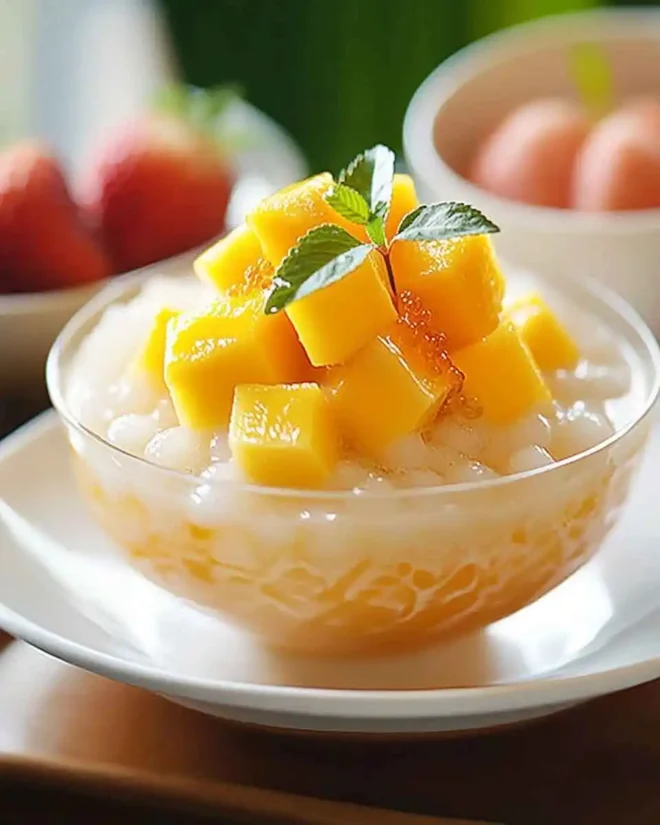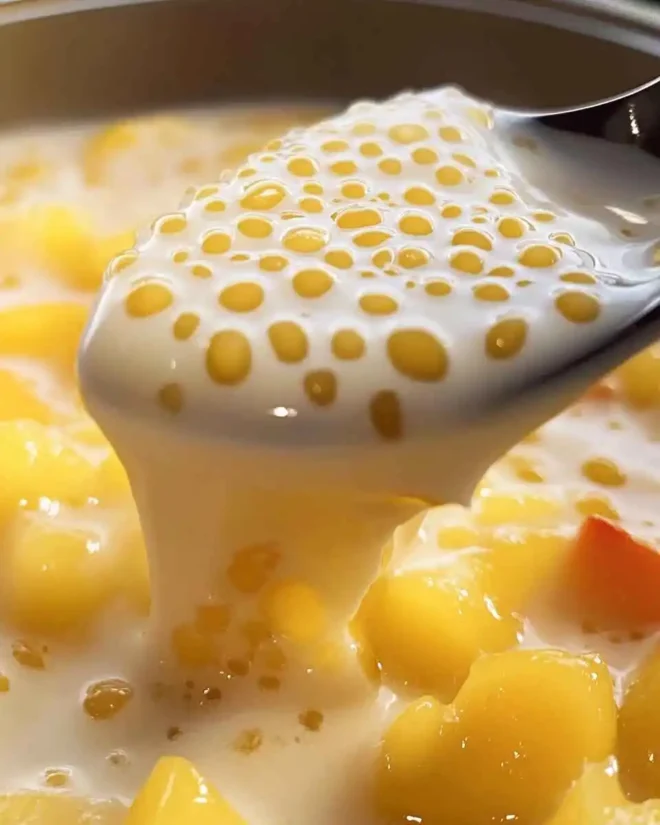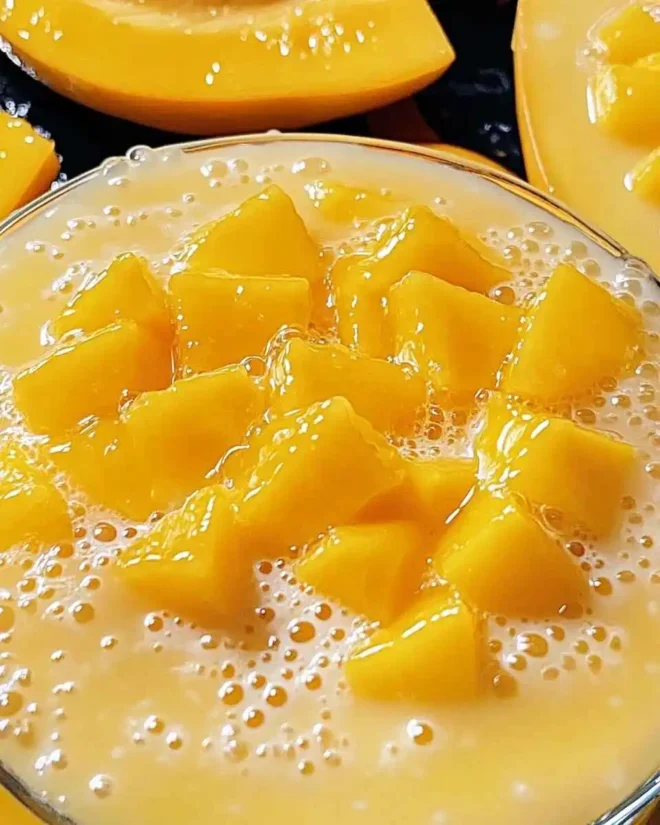There’s something magical about tropical flavors when the heat of summer sets in. This Mango Tapioca recipe is a nod to those sweet, sun-kissed moments. Inspired by American dessert culture with a tropical twist, this tropical pudding combines juicy mangoes with the creamy texture of tapioca pearls, making it the ultimate American summer dessert.
Ingredients for Mango Tapioca
Making this sweet treat is simple, and you likely already have many of these ingredients on hand. Here’s what you’ll need to create this delicious sweet dessert:
- 1 cup diced ripe mango
- 1/2 cup small tapioca pearls
- 2 cups coconut milk
- 1/4 cup sugar (adjust to taste)
- 1/2 tsp vanilla extract
- Pinch of salt
- Optional toppings: more fresh mango, mint leaves, or toasted coconut

How to Make Mango Tapioca – Step-by-Step Guide
Want to know how to make mango tapioca from scratch? Follow this easy mango pudding step-by-step process:
Step 1: Cook the Tapioca
Soak the tapioca pearls in water for 30 minutes. Drain and add to boiling water. Cook for about 10 minutes, or until the pearls turn translucent. Drain and rinse under cold water.
Step 2: Prepare the Coconut Base
In a saucepan, combine coconut milk, sugar, vanilla, and a pinch of salt. Simmer on low heat until the sugar dissolves. Add the cooked tapioca and simmer for another 5 minutes.
Step 3: Combine with Mango
Let the mixture cool slightly. Fold in the diced mango or layer it at the bottom of serving glasses. Chill for at least an hour before serving.
Tapioca Dessert Tips & Mango Pudding Variations
Want to elevate your tapioca dessert game? Here are some pro tips and creative mango pudding variations:
- Use fresh mangoes for the best flavor; frozen works too in a pinch.
- Add a hint of lime zest for extra zing.
- Want to serve mango tapioca warm? Just skip the chilling step it’s comforting and creamy either way.

Serving Suggestions for Chilled Mango Dessert
This dish shines best as a chilled mango dessert. Here’s how to serve it like a pro:
- Garnish with more mango chunks and mint for a picture-perfect finish.
- Serve in glass jars for a tropical party vibe.
- Pair with coconut cookies or a tropical cocktail for the ultimate summer dessert idea.
- Great as part of a tropical treat spread at BBQs or beach picnics.
Mango Tapioca Calories & Dessert Nutrition Facts
Curious about what’s inside each spoonful? Here are the approximate mango tapioca calories and some basic dessert nutrition facts per serving (based on a 4-serving recipe):
- Calories: 210
- Total Fat: 8g
- Saturated Fat: 6g
- Carbohydrates: 32g
- Sugar: 20g
- Fiber: 2g
- Protein: 1g
Note: These values can vary depending on the brand of coconut milk and the amount of sugar used.

FAQs – Everything You Need to Know
Can I Use Frozen Mango?
Absolutely! Frozen mango is a great substitute when fresh mangoes aren’t in season. Just thaw it first and drain any excess juice to prevent the pudding from becoming watery.
How Long Should I Soak Tapioca?
Soak the tapioca pearls in cold water for about 30 minutes before cooking. This helps them cook evenly and prevents clumping.
Share Your Mango Tapioca Recipe – Leave a Comment!
Tried this mango tapioca recipe? I’d love to hear how it turned out! Did you serve it warm or chilled? Add a tropical twist?
👉 Leave a comment below and share your mango tapioca recipe with the community. Let’s inspire each other to get creative in the kitchen!
Explore more similar recipe
Here are some recipes similar to “Mango Tapioca” from Easy Global Recipes that you might enjoy:
- Tropical Coconut Mango Overnight Oats – A refreshing, fruity breakfast with coconut and mango flavors.
- Orange Mango Smoothie – A vibrant, citrusy smoothie packed with tropical goodness.
- Overnight Chia Pudding Parfait – A healthy, creamy alternative with a similar pudding-like texture.
- Banana Almond Smoothie Bowl – A thick, fruity smoothie bowl with a tropical twist.
- Matcha Chia Pudding with Berries – A unique take on pudding with superfood ingredients.

